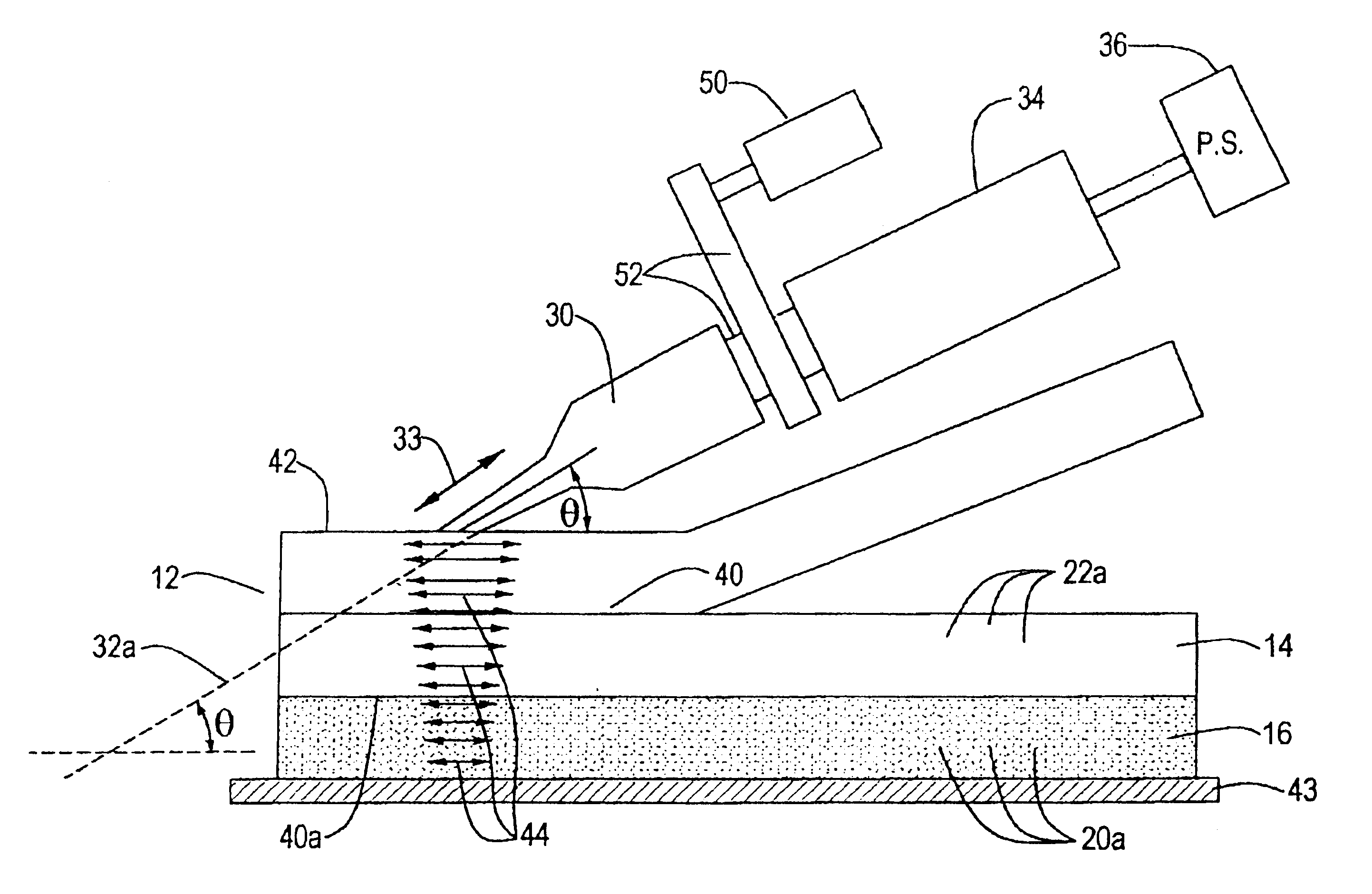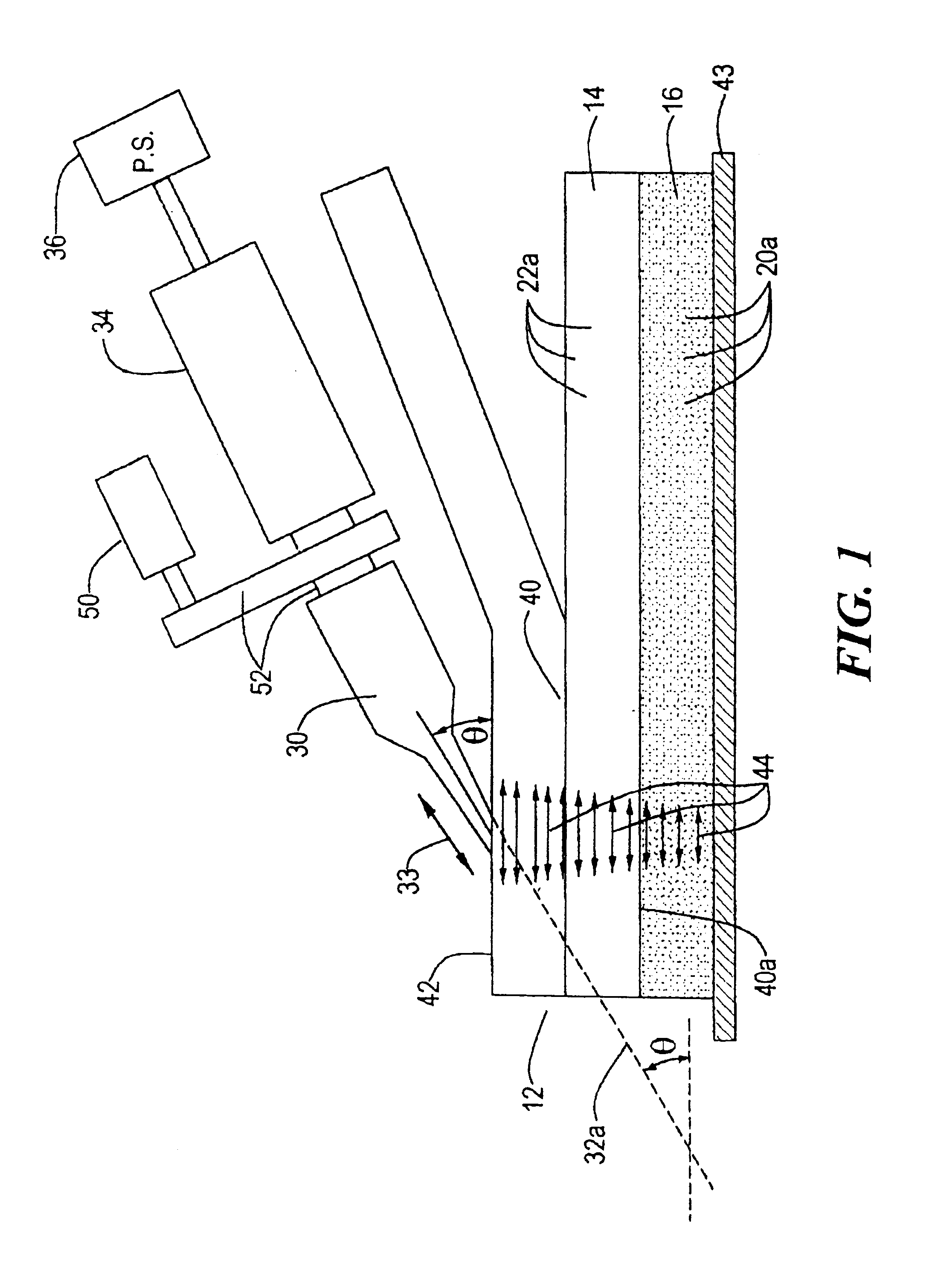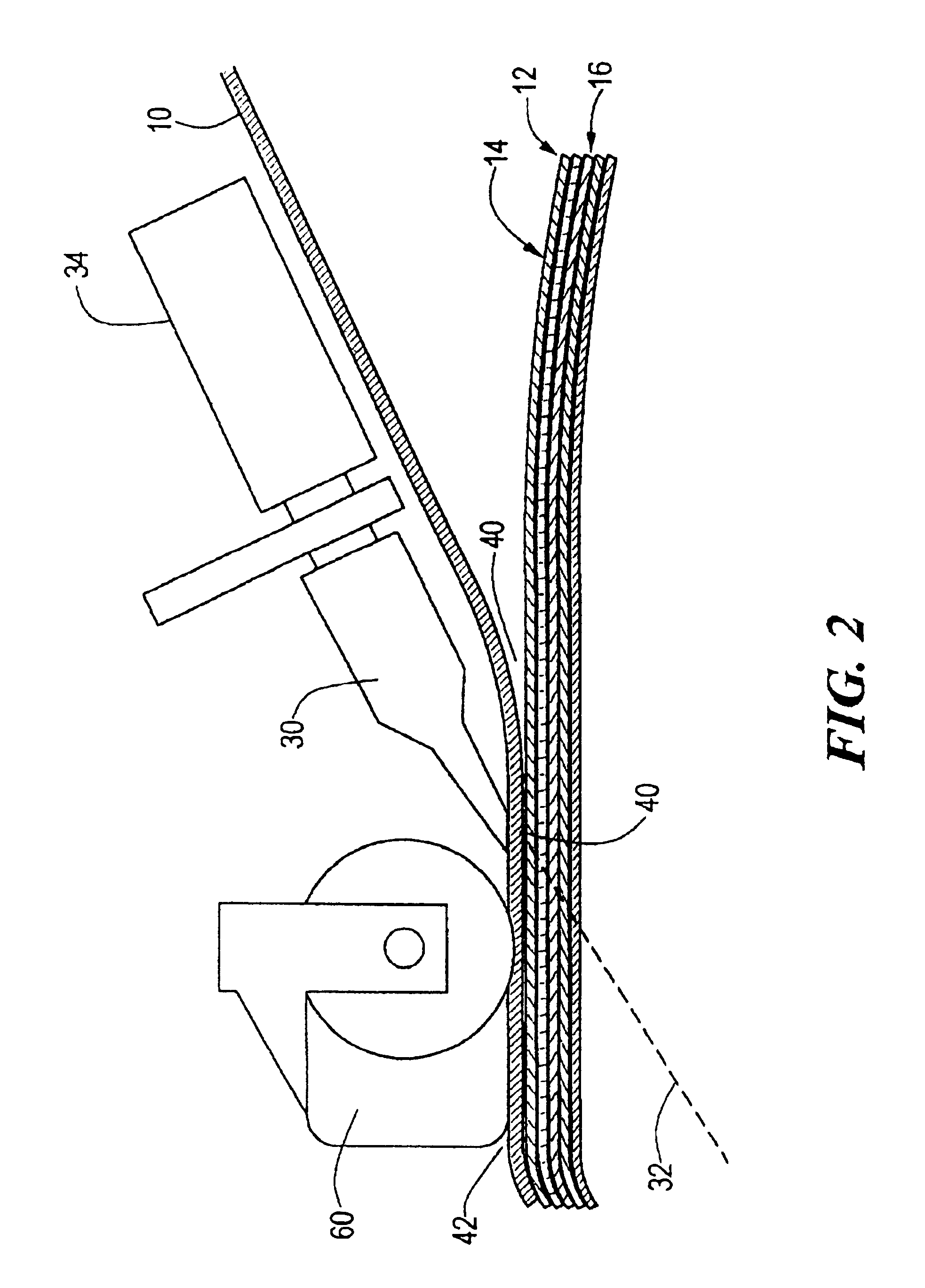Ultrasonic method of fabricating a thermosetting matrix fiber-reinforced composite structure and the product thereof
a thermosetting matrix fiber and composite structure technology, applied in the direction of lamination apparatus, layered products, chemistry apparatus and processes, etc., can solve the problems of degrading the mechanical properties of the cured part, the viscosity of the resin cannot be lowered, and the process can take a matter of hours, so as to reduce or eliminate the repeated debulking operations, enhance the interlaminar properties of ply to ply, and reduce the effect of repeated debulking operations
- Summary
- Abstract
- Description
- Claims
- Application Information
AI Technical Summary
Benefits of technology
Problems solved by technology
Method used
Image
Examples
Embodiment Construction
There is shown in FIG. 1 one thermosetting resin matrix, fiber-reinforced composite ply 10 (layer, tow, ribbon, or tape) in the process of being applied to other thermosetting-resin matrix, fiber-reinforced composite plies 14 and 16. Ultrasonic energy is applied to a modified horn 30, which is vibrated in the direction shown by arrow 33 along its longitudinal axis 32 by ultrasonic transducer 34 driven by power supply 36.
In the prior art, the ultrasonic horn 30 was placed perpendicular to plies of thermoplastic materials and the resulting ultrasonic stress waves were generally understood to be compression waves which moved perpendicularly through the plies.
As explained in the Background of the Invention above, this prior art technique, wherein the ultrasonic horn is placed perpendicular to the plies, has met with indifferent success. It is believed this is in part because the fibers in ply 10 affect and dissipate the energy before it can be converted to heat at the interface 40 betwe...
PUM
| Property | Measurement | Unit |
|---|---|---|
| width | aaaaa | aaaaa |
| frequencies | aaaaa | aaaaa |
| frequency | aaaaa | aaaaa |
Abstract
Description
Claims
Application Information
 Login to View More
Login to View More - R&D
- Intellectual Property
- Life Sciences
- Materials
- Tech Scout
- Unparalleled Data Quality
- Higher Quality Content
- 60% Fewer Hallucinations
Browse by: Latest US Patents, China's latest patents, Technical Efficacy Thesaurus, Application Domain, Technology Topic, Popular Technical Reports.
© 2025 PatSnap. All rights reserved.Legal|Privacy policy|Modern Slavery Act Transparency Statement|Sitemap|About US| Contact US: help@patsnap.com



